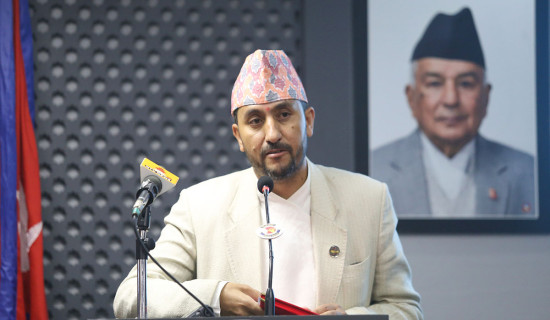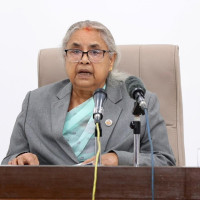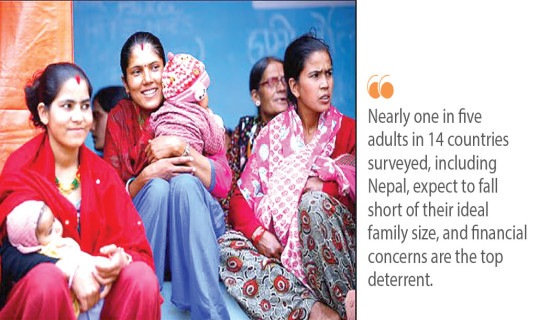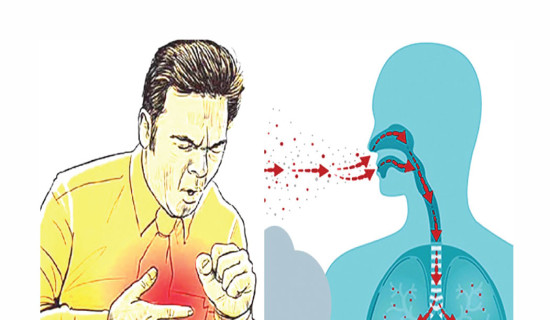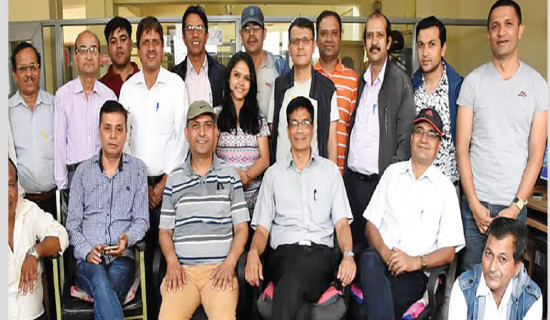- Wednesday, 17 December 2025
Emergence of COVID sub-variants raises alarm of possible new wave
Kathmandu, July 24: The past few months since March, in the wake of COVID-19 third wave during January and February, had given people the much-needed respite after almost two years.
Just as people’s lives got back to normalcy, thinking pandemic was over, however the rising cases of COVID-19 have once again alarmed the public. The COVID-19 continues to evolve with reports of sub-variants of Omicron’s BA.5 variant and spike in daily new cases over the past few days.
A month ago, the daily caseload of COVID-19 was below 1 per cent, but now it has increased to beyond 12 per cent on average.
Though the sub-variants of Omicron are creating sizable infections, the rates of hospitalization and death are low in comparison to the previous variants like Delta, which had caused over 8,000 deaths during the second wave of the pandemic.
According to health experts, infection has been noticed among vaccinated populations and people having natural immunity to the prior variants. Though the health condition of vaccinated people would not worsen, they could transfer the virus to immunocompromised population.
Re-infection increasing
The health experts used to say that people were protected for certain months after the initial infection or are protected after getting full dose or booster dose of the vaccine. But with no sight of relief, the hyper-transmissible BA.5 variant whips around the country, more cases of re-infection are being detected in people who have already had COVID once or even twice before.
“People re-infected twice or even thrice are visiting the hospital as of late,” said Dr. Niraj Bam, Respiratory and Chest Specialist and associate professor at Tribhuvan University Teaching Hospital.
Reinfection may be due to various reasons including more relaxed safety precautions such as wearing a mask and social distancing and washing hands and additional virus mutations, said Dr. Sher Bahadur Pun, chief of the Clinical Research Unit at Sukraraj Tropical and Infectious Disease Hospital in Teku.
“We had expected that eventually people would gain herd immunity against COVID-19 but unfortunately the virus is changing its face and people are getting exposed to the virus time and again,” added Dr. Pun.
It’s not that easy to identify the risk groups vulnerable to reinfection. The state of immune system, age and presence of underlying health conditions and time frame when people were last vaccinated or boosted determine who is prone to being infected.
Health experts have said that though reinfections cannot be prevented, most people may see less severe impact as their internal immune responses
will work if they are fully vaccinated.
However, immunocompromised people may suffer long-COVID and would have their health affected adversely.
Get due shots
It is very essential to stay up to date with vaccines, as vaccines are clinically proven the safest way to lessen the severity of morbidity and reduce mortality.
Dr. Sagar Dahal, chief of the National Immunisation Programme, under the Department of Health Services, said that despite having sufficient doses of vaccines in stock, booster uptake has been very low in Nepal.
“We are conducting vaccination campaign for booster shots. But participation of people to receive the vaccine is very low,” said Dahal. Dr. Dahal suggested all to get vaccinated. “If anyone is due for the booster, get it as early as possible.”
All the local governments are asked to conduct vaccination campaigns, especially for booster shot, said Dr. Dahal and added that vaccination booths have been set up at public places of Kathmandu including vegetable markets in Kalimati and Jadibuti, Pashupatinath Temple premises and Swayambhunath Stupa.
So far, 7,130,779 people or around 24 per cent of the total population have received booster shots. According to Dr. Surendra Chaurasiya, chief of the Logistic Management Section under the Department of Health Services, informed that over 7 million doses of vaccines are in stock in Nepal.
Infection higher among youths
A sub-variant of Omicron, possibly a super-contagious mutant that can circumvent immunity has been spreading rapidly in India. The sub-variant has been detected in 14 other countries with the more transmissible BA.5 dominating caseload globally.
The number of COVID-19 cases has increased with the emergence of sub-variants of Omicron as of late in Nepal. Among the infected people, many are young in the age group of 21-40. Of the total 335 infected in the last 24 hours, 124 fall under the age of 21 to 40.
The virus carriers are those who are mobile, as this age group is most outgoing, said Dr. Bam. It is important to remember that you may be asymptomatic and never know you are infected but still be able to spread COVID-19, added Dr. Bam. “Wearing a mask helps protect vulnerable people you could unknowingly infect.”
The Epidemiology and Disease Control Division (EDCD) has urged the local levels to monitor community transmission, get people vaccinated, either with single shot, second shot or the booster and take appropriate precautions to protect oneself and others.
“As the virus keeps outsmarting us, we need to protect ourselves with the available means,” said Dr. Chuman Lal Das, director at EDCD.
Immunocompromised still at high risk
Immunocompromised people with health conditions like cancer, diabetes and HIV, if infected with COVID-19, could face complications. High-risk people are more likely to experience severity from COVID-19, including hospitalisation and death.
It is very important for immunocompromised individuals to get inoculated and to follow smart health precautions, said the doctors.
With the rise in infection rate, the number of people getting serious and needing hospitalisation has also increased. According to the Ministry of Health and Population, (MoHP) 25 people have been receiving treatment at Intensive Care Unit, and 139 have been hospitalised as of Saturday.
Intensify COVID battle again
It is better to get serious about COVID-19 prevention again from the government and individual level.
“The virus continues to circulate, continues to infect and kill as the risk of COVID infection is still high, so we must be cautious and start to work on protecting ourselves and our communities,” said Dr. Pun.
Many cases are going unreported as many people are reluctant for testing. Though the new variants may not cause the same devastation as earlier, they can still bring a lot of misery in public health care system.
“We need to remain vigilant,” said Dr. Das, adding that the virus may affect severely. The government is working on surveillance, tracking genetic changes and public heath monitoring at the border to check surges before they erupt. The government has also asked the hospitals across the nation to start necessary preparations to deal with possible escalation in hospitalization.
“The number of new COVID-19 cases may increase, as the virus is spreading and infections have yet to peak,” said Dr. Samir Kumar Adhikari, deputy spokesperson at the MoHP. People should be cautious and take measures accordingly, added Dr. Adhikari.
“We have already circulated the notice about the increasing risks of virus spread and asked all to take necessary precautions.”
The first wave of the pandemic was caused by the virus variant first detected in Wuhan of China. The second wave was triggered by the Delta variant affecting public health. Omicron variant, which infected majority of people in the country, was responsible for the third wave.






